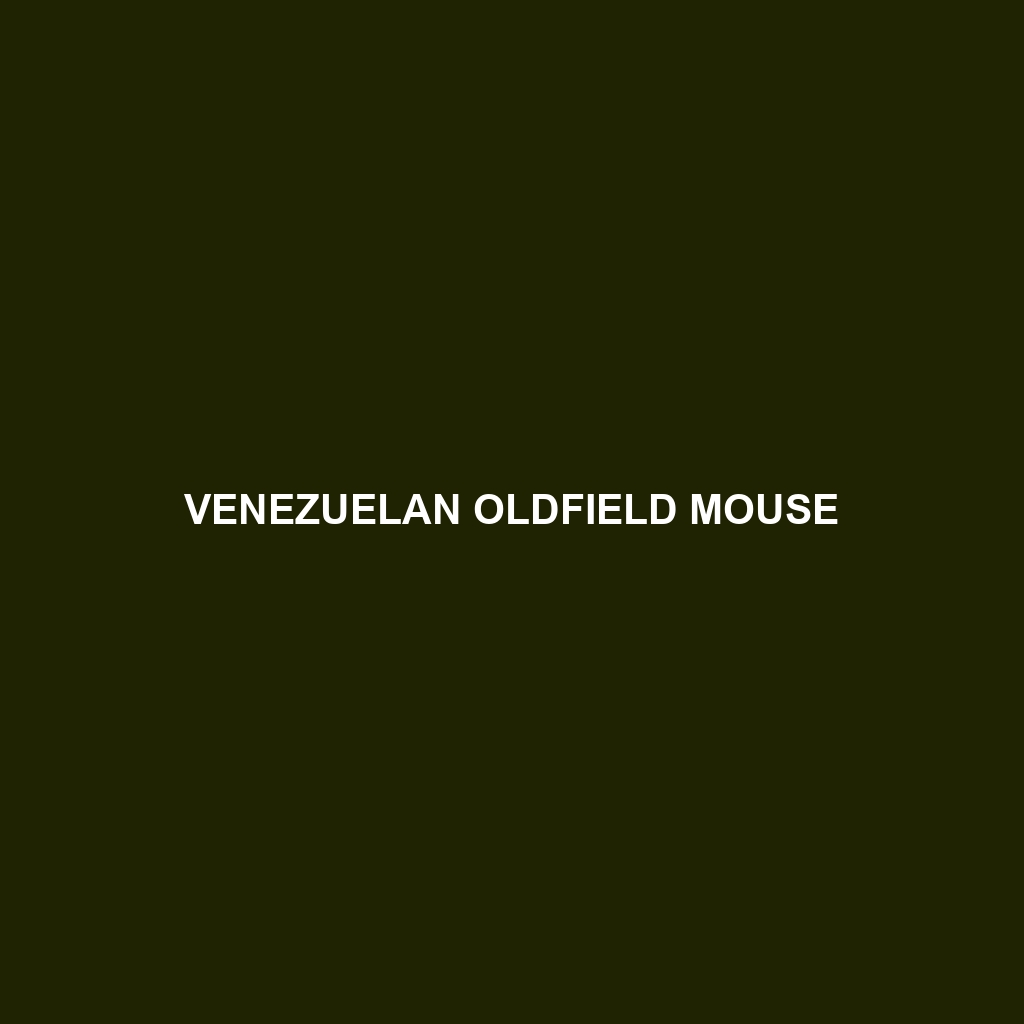Venezuelan Oldfield Mouse
Common Name: Venezuelan Oldfield Mouse
Scientific Name: Sigmodon hirsutus
Habitat
The Venezuelan Oldfield Mouse is primarily found in the grasslands and savannas of Venezuela and parts of northern South America. This species thrives in areas with dense grass cover, which provides both shelter and foraging opportunities. Its distribution ranges from the humid lowlands to more arid regions, demonstrating adaptability to various environmental conditions.
Physical Characteristics
The Venezuelan Oldfield Mouse is a medium-sized rodent, typically measuring between 15 to 25 cm in body length, with an additional tail length of about 12 to 20 cm. It features soft fur that is predominantly brown to light gray on the dorsal side, with a lighter belly. Notable characteristics include large ears, long whiskers, and a slightly elongated body shape, which help distinguish it from similar species.
Behavior
This species is primarily nocturnal, known for its agile movements and keen sense of smell. Venezuelan Oldfield Mice are social creatures often found in small groups, which aids in protection against predators. Their behavior includes burrowing and nesting in hidden locations to keep safe from threats, making them less visible during the day.
Diet
The Venezuelan Oldfield Mouse is primarily herbivorous, feeding on a variety of plant materials. Its diet includes seeds, fruits, grains, and roots, which are abundant in its grassland habitat. These feeding habits not only support its energy needs but also play a crucial role in seed dispersal within the ecosystem.
Reproduction
Breeding typically occurs during the rainy season, which provides ample resources for raising young. A female Venezuelan Oldfield Mouse can have several litters each year, with 3 to 6 pups per litter. The young are born blind and hairless, relying on their mother for warmth and nutrition in the initial weeks of life.
Conservation Status
Currently, the Venezuelan Oldfield Mouse is classified as Least Concern by the IUCN; however, habitat loss due to agriculture and urban development poses a potential threat. Continued monitoring of its population is essential to ensure it does not become endangered or threatened.
Interesting Facts
One fascinating aspect of the Venezuelan Oldfield Mouse is its ability to adapt to various environmental conditions, including altered habitats. Additionally, they are known for their intricate burrow systems that serve as both homes and places to store food.
Role in Ecosystem
As a herbivore, the Venezuelan Oldfield Mouse plays a vital role in its ecosystem by aiding in the control of plant populations and facilitating seed dispersal. Its presence also supports the food web, serving as prey for various predators including snakes, birds of prey, and larger mammals.
